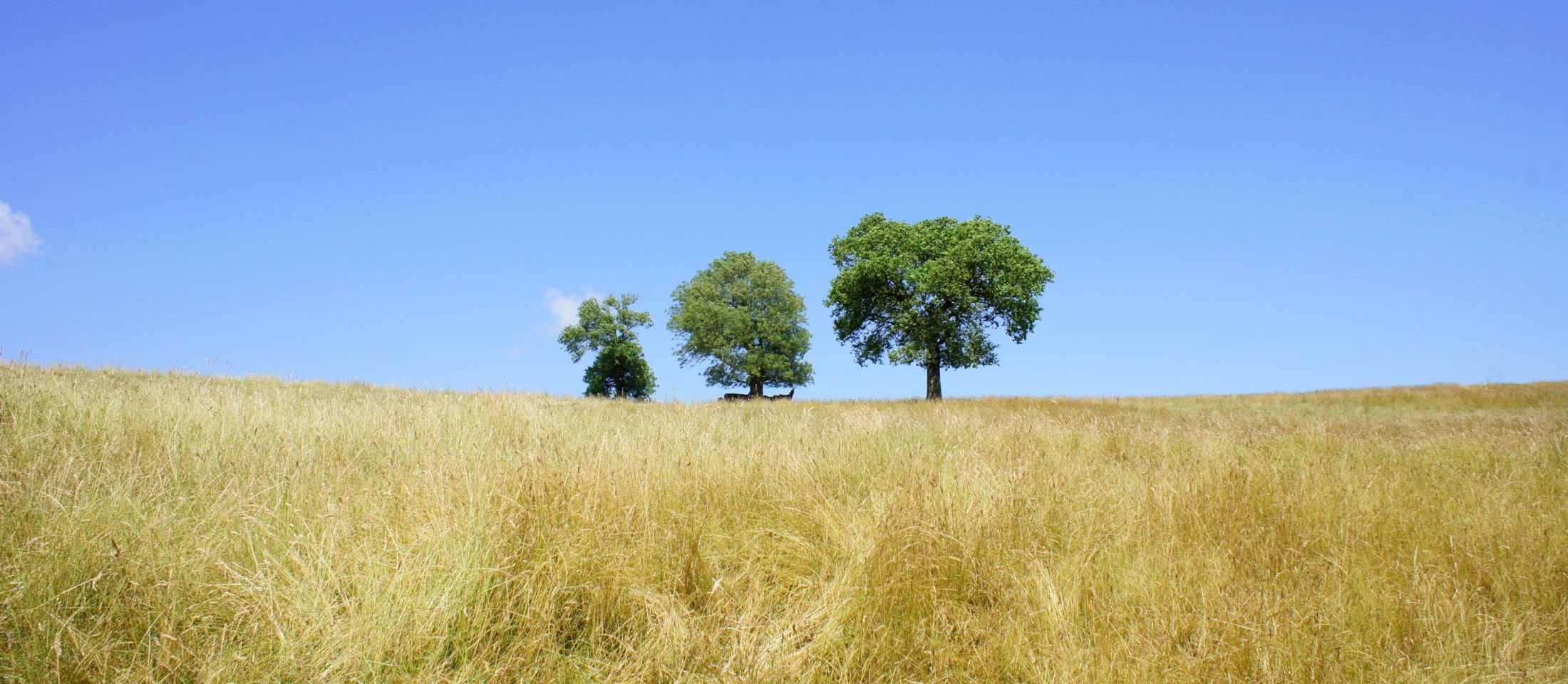
Ash, Ash, Oak in Brabourne, Kent Downs, July 2013. Photo: The Ash Project, Kent DownsKent Downs AONB

Ash, Ash, Oak in Brabourne, Kent Downs, July 2013. Photo: The Ash Project, Kent DownsKent Downs AONB
The Ash Project combines a major new commission by internationally recognised artists Ackroyd and Harvey with a wide ranging cultural and community engagement programme, an online archive and a plan for landscape restoration. The project celebrated the cultural, natural and social history of the ash tree.
The commission was complimented by a two year programme of public engagement which ran from February 2017 – October 2018, including artists’ walks, schools programme, a publicly generated Ash Archive exhibition at galleries in Canterbury, Margate, Chatham, Folkestone and Sevenoaks, green wood working and public programmes at University of Kent, Salt Festival, Folkestone Triennial and Whitstable Biennale. The programme involved communities in actively documenting the contemporary and historic importance of the ash tree in Kent. The project was delivered in a very active collaboration with all of our partners, the research and scientific community of the Kent Downs and over 50 artists who contributed their amazing work, time and thinking.
We helped secure funding for a new full colour, hard-back book ‘Ash’ by Archie Miles that records ash trees across the landscapes of Britain, it features many references to The Ash Project and includes a forward by Dame Judy Dench.
Through the project we have to developed a considered approach to a landscape recovery through replacement planting. This is a plan for the Kent Downs and Kent more widely and it is an approach that we hope will be shared through the Woodland Trust across the UK.
Read our top ten tips for future projects
View our infographic PDF
We hosted a large number of events and they were delivered through a network of partners across the county of Kent. We felt we needed a simple evaluation approach that provided a logical framework for all events.
Our framework responded to a set of Key Evaluation Questions and set out linkages between activities, expected outputs and outcomes across all elements of the project. The evaluation plan was prepared with the understanding that a mosaic approach is the best way to gather information across a range of events. We also worked with Kate Measures Heritage Insider to provide evaluation “Critical Friend” support to the project and to lead a Project Learning Review with the board at the end of the project.
Employing arts and culture as an engagement tool for environmental messages has clearly sparked fresh debate. It has reinvigorated people about their local environment and provided a focal point for them to talk in an impassioned way about their own personal connection to it in ways that traditional science communication sometimes struggle. By involving artists, creative practitioners and an impressive range of stakeholders, the project has ‘reframed’ a scientific issue to provoke an emotional response to Kent’s natural heritage and in particular, ash trees.
The project explored ash dieback through the production and sharing of very high quality artistic outputs regardless of the intended audience; from arts based programme for children and a striking installation in the landscape for anyone who encounters it to an absorbing temporary exhibition for gallery visitors.
A robust partnership agreement and strong focus on the vision of the project provided a solid foundation for the project’s success despite the challenges of working across a county wide area brought challenges. Bringing in specialist skills, for example, in art commissioning coupled with good project management has enabled Kent Down’s The Ash Project to create a model for future projects both in terms of the running of the project and its outputs and outcomes.
Author: Kate Measures from Heritage Insider
Author: Kate Measures from Heritage Insider
Author: Kate Measures from Heritage Insider
The Ash Project is an arts and cultural heritage project with the potential for a national reach. This national ambition draws from our experience with the Kent based Ash Project and seeks to work with leading National Arts and Heritage Organisations to produce a programme of exhibitions, public engagement and public art. It draws on the knowledge to build new partnerships, audiences and relationships and assist in generating a significant cultural heritage legacy for the project and for our environmental ash heritage. The national project is being developed by the Kent Downs AONB (The Ash Project), supported by the Woodland Trust.
Art can be an incredible catalyst for engagement and understanding, reaching new, wide audiences it can also provide a vehicle for creating an extraordinary and enduring celebration and record of the heritage of ash trees in our landscapes. The Ash Project will combine newly commissioned artworks by internationally recognised artists with a cultural heritage archive of ash artworks, objects and heritage items that will also be
recorded in enduring online archive. The project aims to engage people in recording our evolving relationship to ash trees, becoming active archivists in mapping the story of ash across our landscapes, to celebrate ash trees and landscapes and explore the histories we share with the tree. Over the coming years we will seek funding to meet the ambitions we have for a national project.